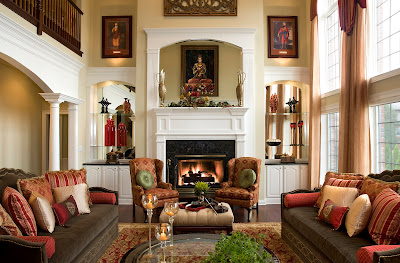Home Interior Design Living Rooms
Interior Design Living Room
The living room is a very important part of the home. It serves its own unique purpose for the master of the house, just like the rest of the house. In order to have a clearer understanding of what the essentials of living room interior designs, it is first important to know what purposes does a living room serve. Basically, the living room is a place that is designed for a relaxed yet active exchange between the people happening to be in that place. This purpose holds true whether the person currently relaxing on the family room is alone with himself, or with his family, friends, visitors, or colleagues. The living room is a spot that is designed for openness; thus, it must give the ambiance of acceptance and friendliness. After all, the living room is where you bring your visitors. You wouldn't let into your room someone who isn't welcome in your life, would you? To sum it up, we may then presume that the room serves two purposes. Primarily, it should be a place for an active exchange and secondly, it should be a place that expresses your acceptance of the visitor. These two will be the working principles to be used in this article.
Based on the preceding paragraph,interior designs should provide an active yet relaxed environment. This can be done, obviously and basically, by designing the colors of your wall and lighting to provide those conditions. Such active colors for a wall include light orange, a slightly stronger tint of flesh, white. However, although colors such as red and electric blue can be considered as active colors, they will not qualify as colors for your room. This is because the color red gives an illusion of space in such a way that it makes the space look smaller, thus, it becomes more intimate, which could be intimidating for visitors especially the newly acquainted ones. Meanwhile, electric blue is also not suitable as colors of a wall because when seen in huge spaces, such as walls, it has a slight effect of inducing dizziness to some people, and any of your visitors could be one of them. As for lighting, an incandescent lighting is more suitable for achieve a relaxed yet higher activity for a room, rather than for fluorescent bulbs. However, since it also now important so save energy, one good trick to comply both objectives is to use one strong, but small in size, incandescent bulb and surround its upper half with a stainless steel bowl. The use of a few energy-efficient fluorescent bulbs to scatter the light is also advisable.
The family room is not named merely as it is for no reason. It is called the "living room" because it is where the life of the house should be. Knowing this, it is very important to have a source of lighting from the very source of light: the sun. So, when planning your living room interior designs, be sure that one of the fixtures, basically the window, should be placed in a way that it accepts as much sunlight as you see fit.









































